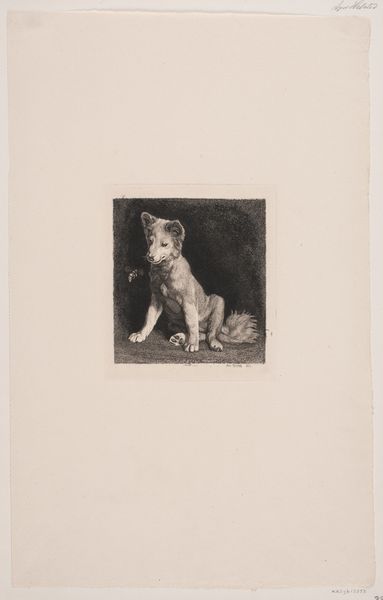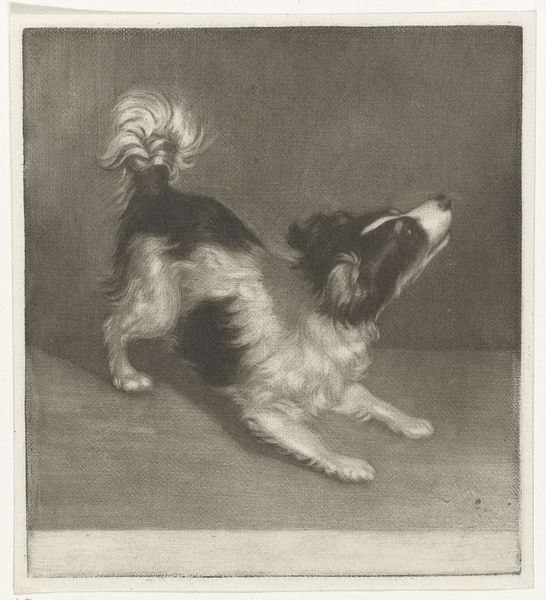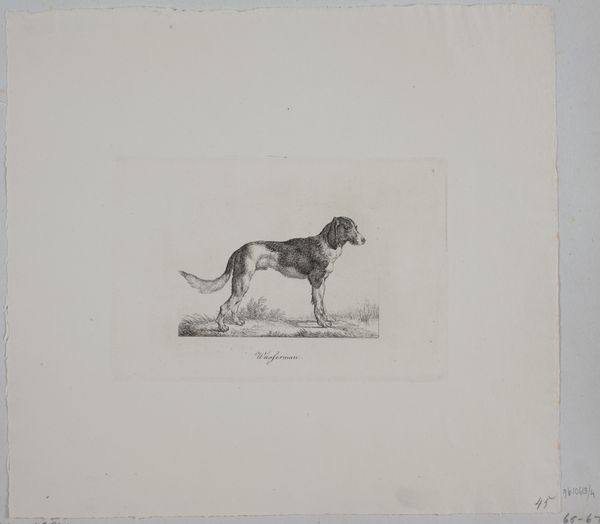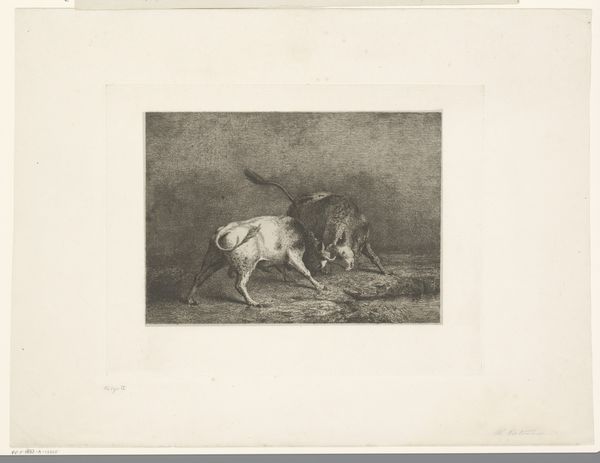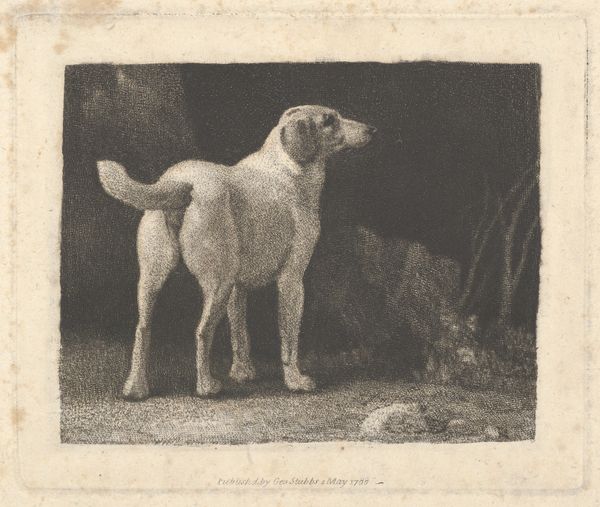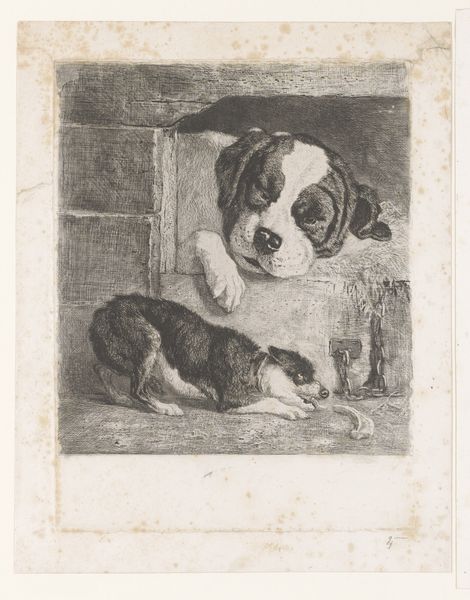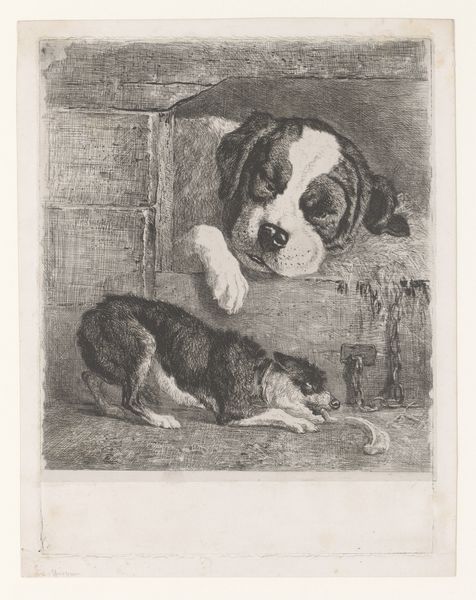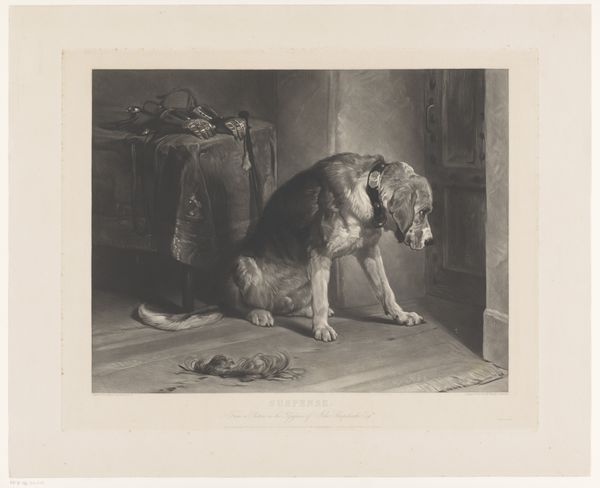
drawing, print, etching, paper, charcoal
#
portrait
#
drawing
#
animal
# print
#
etching
#
dog
#
charcoal drawing
#
paper
#
charcoal
#
realism
Dimensions: height 447 mm, width 560 mm
Copyright: Rijks Museum: Open Domain
Curator: Auguste Danse's etching, "Hond voor een spiegel," which translates to "Dog Before a Mirror," created in 1891. The print shows, unsurprisingly, a dog facing its reflection. What strikes you initially? Editor: A sense of isolation. The monochrome palette enhances the dog's solitude, emphasizing its gaze at its reflected self. The composition draws my attention to the formal qualities of light and shadow across its form and the geometry of the mirror frame. Curator: It's interesting that you noticed that, and indeed, this piece engages with Realist printmaking, a common medium reproduced and widely distributed to the European bourgeois at the time, depicting animals and pets of upper-class citizens, a sign of increased materialism and consumerism in the household. Editor: Focusing on form, the dense strokes of the etching build up texture that mimics fur quite realistically and contribute to the sense of the animal being rooted in the immediate present of the depicted moment. But does the print, a fairly reproducible process, question the unique value that the haute-bourgeois often places on fine art? Curator: Certainly! The medium itself subverts the notion of unique artistry. This accessibility democratizes art, shifting focus from elite craftsmanship to widespread visual engagement and a reflection of the dog-owning societal trend. Editor: But the technical skill is undeniable, and the careful layering of line and tone invites a long gaze at the dog and at our viewing experience in contemplating it in the artifice of the constructed image, inviting the audience to meditate on questions of simulacrum and appearance, rather than domestic labor, which might escape attention. Curator: While I respect your focus on visual semantics, I think the social impact, mass production and the commercial aspect inherent to Danse's work allows a deeper conversation. Editor: Ultimately, its the confluence of meticulous execution with conceptual depth, isn't it? Both the craftsmanship and the context contribute to a richer understanding.
Comments
No comments
Be the first to comment and join the conversation on the ultimate creative platform.
